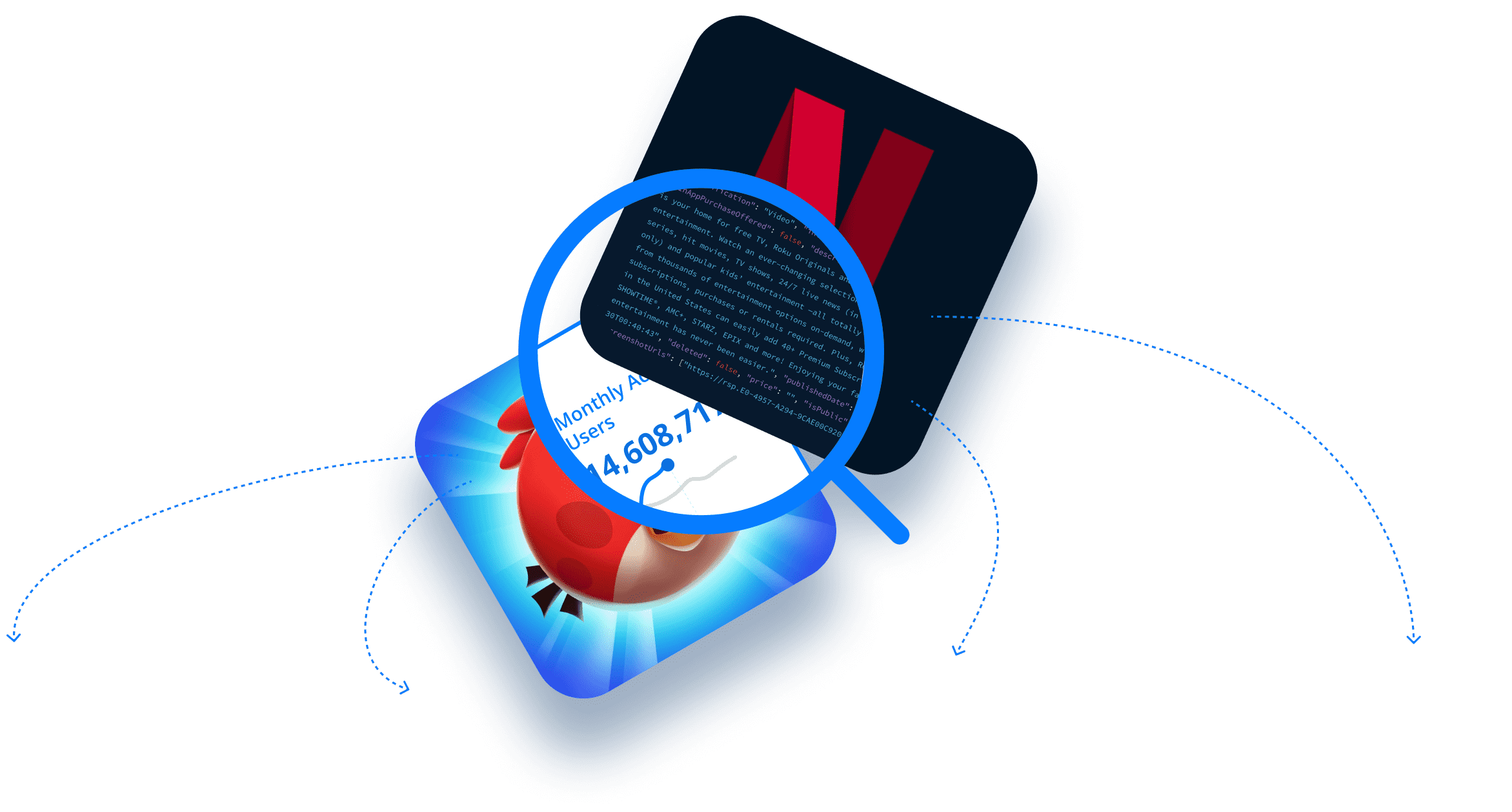In this article we answer the question: “What Are IAB Categories?” We discuss the IAB Content Taxonomy, why IAB categories are important, and a number of benefits and uses. In particular we discuss how the taxonomy empowers digital advertising, mobile security, lead generation, and more.
Now, this is a pretty long article. So let’s cut to the chase. Here’s what we cover (click the links to jump to the corresponding section):
- • What Is the Interactive Advertising Bureau?
- • What Is the IAB Content Taxonomy?
- • What Are IAB Categories?
- • Why Is the IAB Content Taxonomy Important?
- • IAB Content Taxonomy Benefits and Uses
- • How Can Companies Use IAB Categories?
- • IAB Content Taxonomy Use Cases for Advertisers
- • IAB Content Taxonomy Use Cases for Ad Networks and Demand-Side Platforms (DSPs)
- • IAB Content Taxonomy Use Cases for Ad Tech Developers
- • IAB Content Taxonomy Use Cases for App Publishers
- • IAB Content Taxonomy Use Cases for Media Buyers and Planners
- • IAB Content Taxonomy Use Cases for SDK Developers
- • IAB Content Taxonomy Use Cases for Mobile Security and Mobile Application Management
- • IAB Content Taxonomy Use Cases for Sales, Marketing, and Lead Generation
- • Get Easy Access to IAB Category Insights
Ready to get started? Try our IAB Category APIs and file dumps.
What Is the Interactive Advertising Bureau?
The Interactive Advertising Bureau (IAB) is an industry association that promotes the growth and best practices of digital advertising and marketing. Founded in 1996, the IAB has played a significant role in the development and standardization of digital advertising processes, guidelines, and best practices.
For example, one of the primary roles of the IAB is to create and maintain standards for digital advertising. This includes formats for display, video, and mobile ads, as well as taxonomies for supply-side businesses and ad content. By setting these standards, the IAB helps ensure consistency and quality across the industry.
What Is the IAB Content Taxonomy?
One of the standards developed and maintained by the IAB is the IAB Content Taxonomy, a classification system designed to standardize the categorization of publisher content across platforms.
Primarily applied to mobile and connected TV (CTV) apps, the IAB Content Taxonomy describes publisher content with a high degree of granularity. This helps advertisers understand where their ads are being placed, enabling them to improve audience segmentation, targeting, and the overall relevance of their ad campaigns.
The taxonomy is periodically updated to reflect the evolving nature of digital content. The latest and greatest version is IAB Content Taxonomy 3.0, which is composed of hundreds of ultra granular app categories and subcategories.
What Are IAB Categories?
IAB categories refer to the various classifications that comprise the IAB Content Taxonomy. As noted above, these categories are designed to help standardize the way app content is described and categorized across the mobile and CTV app industry.
The IAB Content Taxonomy has multiple tiers, with top tiers offering general content descriptions and subsequent tiers providing more granularity. For example, the IAB's “Books and Literature” category includes subcategories like “Art and Photography” and “Comics and Graphic Novels,” while the “Automotive” category is segmented into “Motorcycles,” “Scooters,” “Auto Buying and Selling,” “Auto Insurance,” “Auto Repairs,” and “Auto Rentals.”
Why Is the IAB Content Taxonomy Important?
In short, the IAB created the Content Taxonomy to provide a universal approach to app categorization. Its categories and subcategories provide a “common language” for describing app content that transcends the native taxonomies of platforms like Google Play, the Apple App Store, and Roku Channel Store.
For example, consider that mobile and connected TV (CTV) app stores have slightly different app categories. Where Google has “Education,” “Food & Home,” and “Health & Fitness”; Roku has “Educational,” “Food & Drink,” and “Health & Wellness.” The differences are slight, but they complicate things like contextual targeting, brand safety, and campaign reporting. To address this, the IAB’s taxonomy offers standardized categories for all app stores.
In addition, app stores don’t typically have that many categories — Google Play has 49, the App Store has 26, and the Roku Channel Store has 63. The IAB Content Taxonomy, meanwhile, has hundreds. This means it’s far more granular than the standard app store taxonomies, enabling more advanced app segmentation.
IAB Content Taxonomy Benefits and Uses
We’ve already touched on a few ways the IAB Content Taxonomy adds value to the digital advertising industry, but let’s make things a little more concrete. The IAB Content Taxonomy offers the following benefits and uses:
- • Standardization
- • Improved Ad Targeting
- • Brand Safety
- • Enhanced Reporting and Analytics
- • Facilitates Programmatic Buying
- • Adaptability
Standardization
The digital landscape is vast and diverse, with millions of publishers producing a wide variety of content. The IAB Content Taxonomy provides a standardized framework for categorizing this content that transcends native app store taxonomies and ensures consistency across the industry.
Improved Ad Targeting
Advertisers want their ads to appear alongside relevant content. By categorizing content using the highly granular IAB taxonomy, it becomes easier for advertisers to target specific content types or topics, ensuring that their ads reach the most relevant audiences.
Brand Safety
Advertisers are concerned about their brand's image and want to avoid placing ads next to inappropriate or controversial content. The IAB Taxonomy allows for more precise content categorization, which in turn helps advertisers avoid unwanted placements.
Enhanced Reporting and Analytics
With standardized content categories, advertisers can generate more consistent and meaningful reports. This aids in analyzing ad performance, understanding audience engagement, and making informed decisions for future campaigns.
Facilitates Programmatic Buying
Programmatic advertising relies on algorithms and real-time data to automate the buying and placement of ads. The IAB Content Taxonomy provides a structured way to describe content, making it easier for programmatic platforms to match ads with appropriate content quickly.
Adaptability
The digital content landscape is continually evolving. The IAB periodically updates its taxonomy to reflect these changes, ensuring that the classification system remains relevant and up-to-date.
How Can Companies Use IAB Categories?
Companies can leverage the IAB Content Taxonomy in a variety of ways. While enhancing digital advertising is among the most prevalent use cases, it’s by no means the only one. Indeed, the granularity and universality of the taxonomy lends itself to everything from lead generation to enterprise security.
Below, we provide some examples of how the following business-types and teams can utilize the taxonomy:
- • Advertisers
- • Ad Networks and Demand-Side Platforms (DSPs)
- • AdTech Developers
- • Publishers
- • Media Buyers and Planners
- • SDK Developers
- • Mobile Security and Mobile Application Management (MAM)
- • Sales, Marketing, and Lead Generation
IAB Content Taxonomy Use Cases for Advertisers
Targeted Ad Campaigns: Advertisers can specify the IAB categories they want their ads to appear in, ensuring that their ads are displayed alongside highly relevant content.
Brand Safety: By whitelisting and blacklisting specific IAB categories, advertisers can avoid placing their ads next to content that might be inappropriate or misaligned with their brand values. In addition, because the IAB categories are more granular than app store categories, they can be more precise when making these decisions. For example, advertisers that don’t want to promote their products on apps related to alcoholic beverages can blacklist the “Alcoholic Beverage” IAB category rather than weed out these apps manually or put a blanket ban on apps in the App Store's more generic “Food & Drink” category.
Performance Analysis: Because app stores use slightly different category and genre names, it can sometimes be difficult for advertisers to analyze cross-platform ad performance. IAB categories solve this by offering a more ubiquitous approach to app classification, helping advertisers analyze campaigns more efficiently and refine strategies for future campaigns.
IAB Content Taxonomy Use Cases for Ad Networks and Demand-Side Platforms
Automated Ad Matching: Ad networks and DSPs can use the taxonomy to automatically match ads with appropriate content categories in real-time, especially in programmatic advertising. Furthermore, the taxonomy’s superior granularity and ubiquity can be used to deliver more efficient and relevant ad matching capabilities.
Inventory Organization: Ad networks and DSPs can organize and segment their available inventory based on IAB categories, making it easier for advertisers to select desired placements.
Enhanced Reporting: Ad Networks and DSPs can provide advertisers with detailed reports based on IAB categories, offering a more global view of ad performance accounting for all app stores and operating systems.
Learn how to boost ad targeting, maximize impressions, and fight ad fraud with app intelligence.
IAB Content Taxonomy Use Cases for Ad Tech Developers
Tool Development: Developers creating tools for the ad industry, such as Content Management Systems (CMS) or ad servers, can integrate the IAB taxonomy to ensure compatibility and interoperability with other platforms.
API Integrations: For tools that interface with multiple platforms or networks, using a standardized taxonomy like the IAB's ensures smoother data exchange and integration.
IAB Content Taxonomy Use Cases for App Publishers
Market Research and Competitor Analysis: Publishers can utilize IAB categories to identify apps that compete with their solutions more directly. They can then use this as a launching point for more detailed analysis.
IAB Content Taxonomy Use Cases for Media Buyers and Planners
Media Planning: Media professionals can use the taxonomy to identify the best content categories for their campaigns, optimizing reach and relevance.
Budget Allocation: By understanding the performance metrics associated with different IAB categories, media buyers can allocate budgets more effectively.
IAB Content Taxonomy Use Cases for SDK Developers
Lead Generation: SDK developers can use IAB categories to identify best-fit app publishers to integrate their solutions. For example, if they’ve developed an SDK for Marketing Automation, User Support, or Customer Relationship Management (CRM), they can zero in on apps that fall into IAB categories like “Business and Finance,” “Business,” “Logistics,” etc.
Learn more about generating mobile app publisher leads!
IAB Content Taxonomy Use Cases for Mobile Security and Mobile Application Management
Content Filtering: Mobile security and MAM solutions can use the IAB taxonomy as a basis for content filtering. For instance, businesses might want to restrict access to certain categories of content on company-managed devices. Using the IAB taxonomy can provide a standardized way to implement these restrictions.
Risk Assessment: Related to the above, some content categories might be deemed riskier than others in terms of potential security threats. By classifying apps or content using the IAB taxonomy, mobile security solutions can assign risk levels based on the associated categories.
Policy Enforcement: MAM solutions can enforce policies based on IAB content categories. For instance, certain apps that fall under specific IAB categories might be blacklisted or require additional authentication.
Learn how to boost mobile security with thousands of mobile and CTV app data points!
IAB Content Taxonomy Use Cases for Sales, Marketing, and Lead Generation
Audience Segmentation: Marketers that target mobile and CTV app publishers can segment their audiences using the IAB taxonomy. This allows for more personalized marketing campaigns tailored to specific audience interests.
Ad Campaigns: When running paid advertising campaigns, marketers can use the IAB taxonomy to ensure ads are placed alongside the most relevant content, increasing the likelihood of engagement.
Lead Generation: Companies that target app publishers can use IAB categories to identify those that fit their products and solutions best. Returning to the SDK example above, if they’ve developed an SDK for Marketing Automation, User Support, or Customer Relationship Management (CRM), they can zero in on apps that fall into IAB categories like “Business and Finance,” “Business,” “Logistics,” etc.
Prospect Research: Sales reps can use the IAB taxonomy as a framework for researching prospects. For example, if their solution has gained traction with apps in specific categories, they can use the IAB taxonomy to research more apps in that category or find similar categories to experiment with.
Learn how to grow your pipeline and boost sales with IAB categories and mobile app intelligence.
Get Easy Access to IAB Category Insights
42matters is a leading provider of mobile and connected TV (CTV) app data and app store intelligence. Our APIs, file dumps, and visual app market research platforms offer insight into tens-of-millions of mobile and CTV apps from 12 leading app stores. This includes the Apple App Store, Google Play, Amazon Appstore, Tencent Appstore, Huawei App Gallery, Roku Channel Store, Apple TV tvOS App Store, Amazon Fire TV, Google TV, Samsung Smart TV Apps, LG Content Store, and Vizio SmartCast Apps.
To learn more about our IAB category insights, be sure to set up a meeting with our team!



